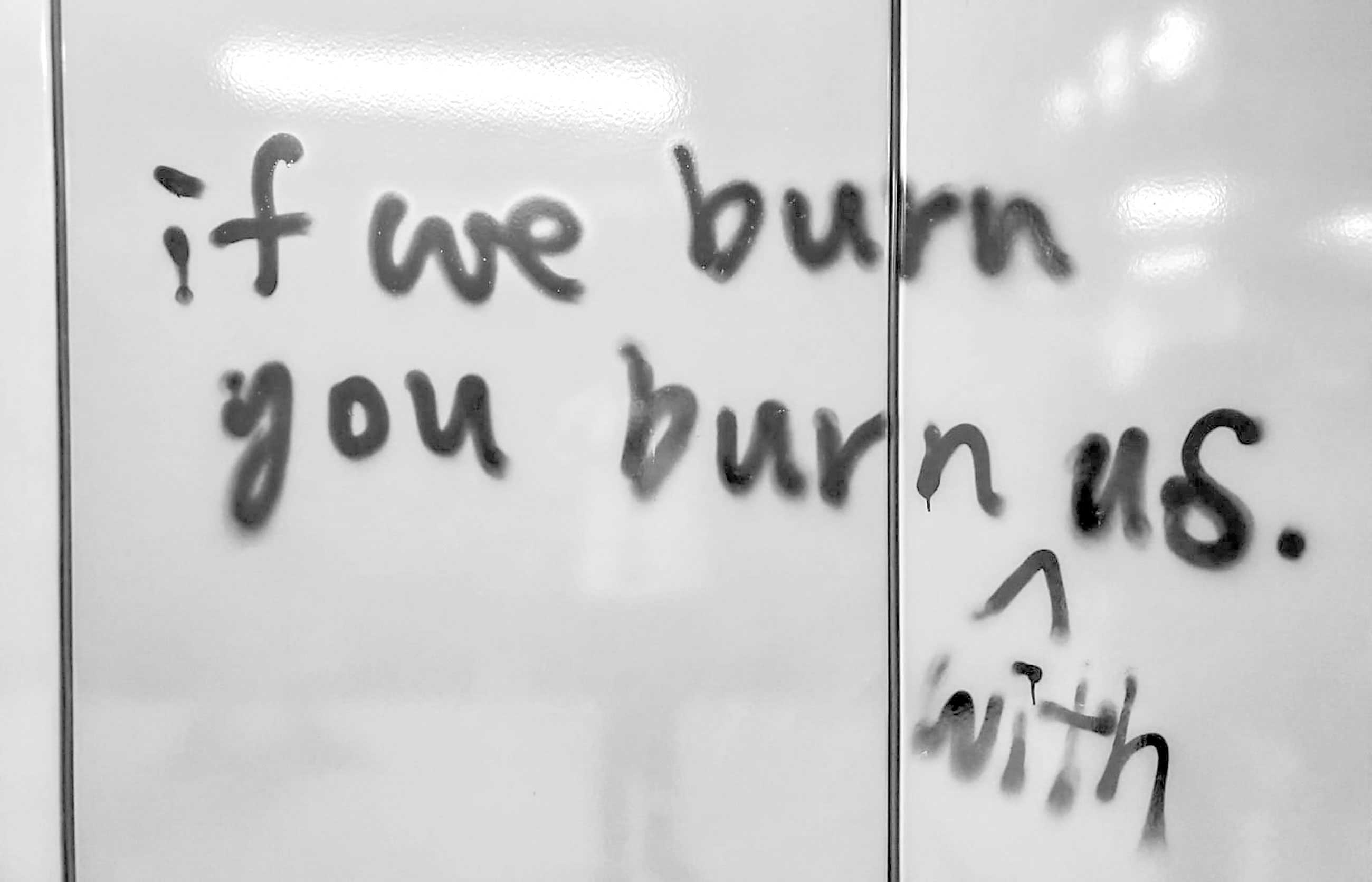Leaders in 2014
In 2014, the civil disobedience movement was spearheaded by the so-called Occupy trio - legal academic Benny Tai Yiu-ting, sociologist Chan Kin-man and longtime pro-democracy advocate Reverend Chu Yiu-ming - as well as leaders from the groups Hong Kong Federation of Students and Scholarism.
A number of key figures from the movement were thrown behind bars for their roles, with some still serving time.
OCCUPY TRIO
STUDENT LEADERS
Leaders in 2019
Unlike Occupy, there is an absence of a clear leadership in the current movement against the now-withdrawn extradition bill. Young protesters have made full use of encrypted messaging platform Telegram and Reddit-like site LIHKG to brainstorm protest tactics. They make their moves after deliberation and online voting, and evaluate the effectiveness of strategies after every protest.
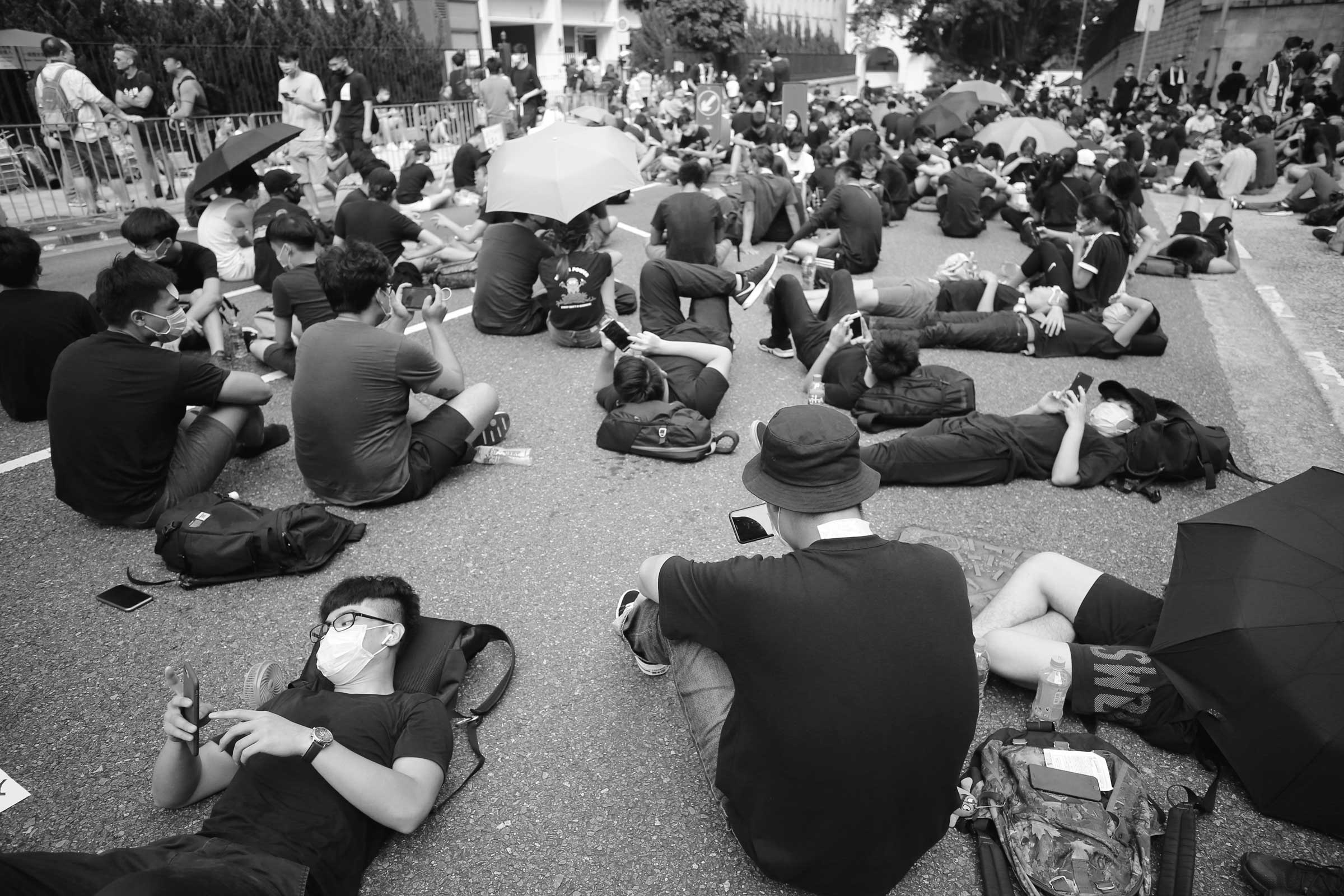
While the movement has appeared leaderless, some argue it actually has a decentralised leadership. For instance, activists are broken into smaller groups responsible for different duties ranging from drafting publicity materials, logistics and media relations, to treating injuries and offering protesters rides home.
Tactics in 2014
The 2014 Occupy movement was planned as a three-day sit-in but it ended up spanning 79 days as protesters took over major thoroughfares in Admiralty, Causeway Bay and Mong Kok, bringing traffic to a standstill.
Protesters at the time saw it as a long-term occupation: they turned protest zones into local communities by building a “study hall” for students boycotting classes, set up tents for protesters to stay overnight and transformed public washrooms into fully-equipped ones with shampoo, skincare products and even moisturising masks.
The original plan floated by the three founders was called “Occupy Central With Love and Peace”, with the organisers repeatedly emphasising the importance for the civil disobedience movement to remain non-violent and peaceful in order to gain the moral power.
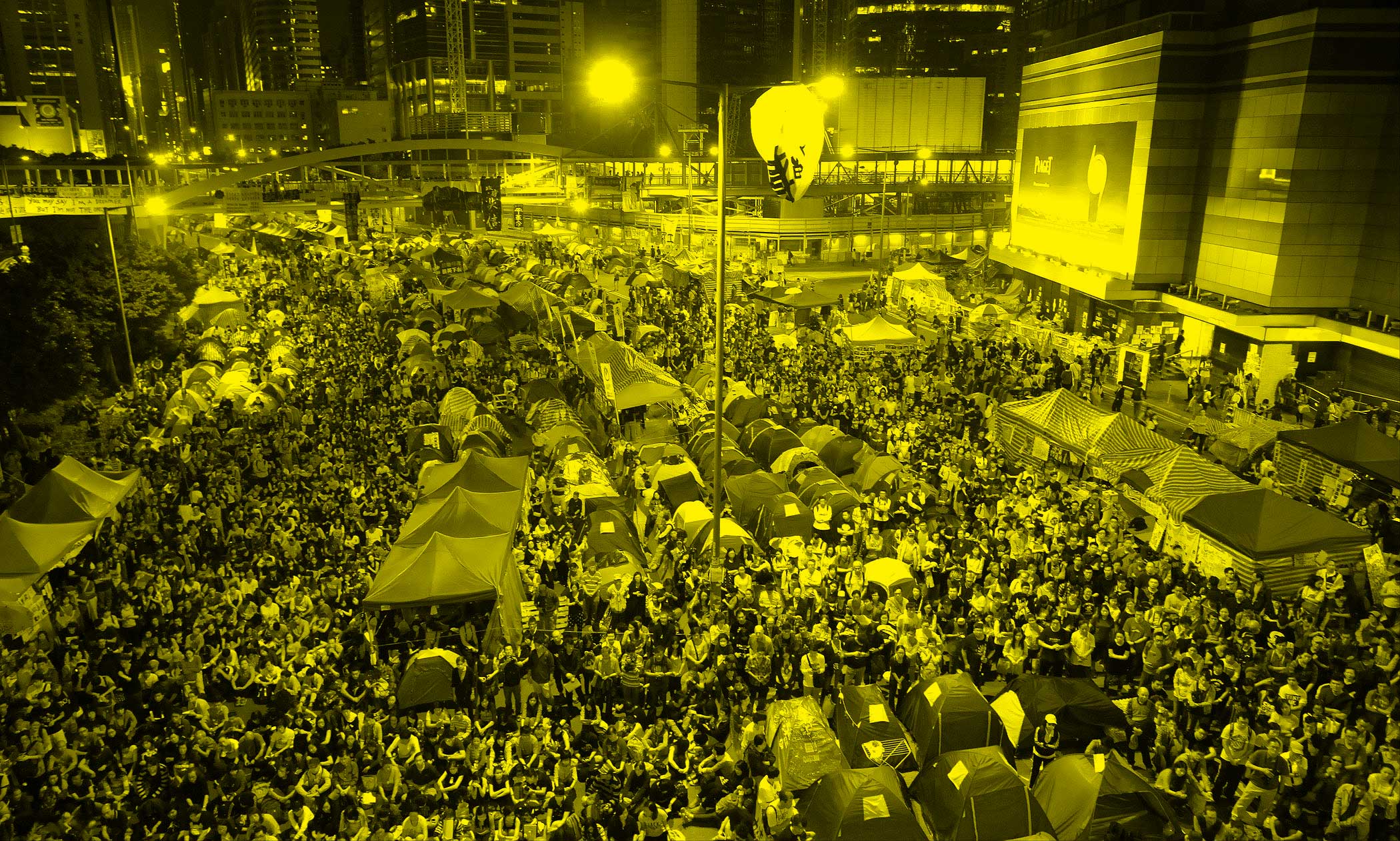
Tactics in 2019
In 2019, protesters have changed their strategy completely. They have given up on defending occupation zones and are now adopting guerilla tactics and cat-and-mouse games with police, pointing out that this was a way to drain the energy and resources of the force. The battlefields have also spread all over the city with clashes taking place in local neighbourhoods. So far, rounds of tear gas have been fired in 14 of the 18 districts in Hong Kong.
Apart from the government headquarters and the Legislative Council complex, protesters also vandalised police stations and MTR stations as they accused the city’s rail giant of kowtowing to Beijing by suspending train services at the behest of police on protest days.
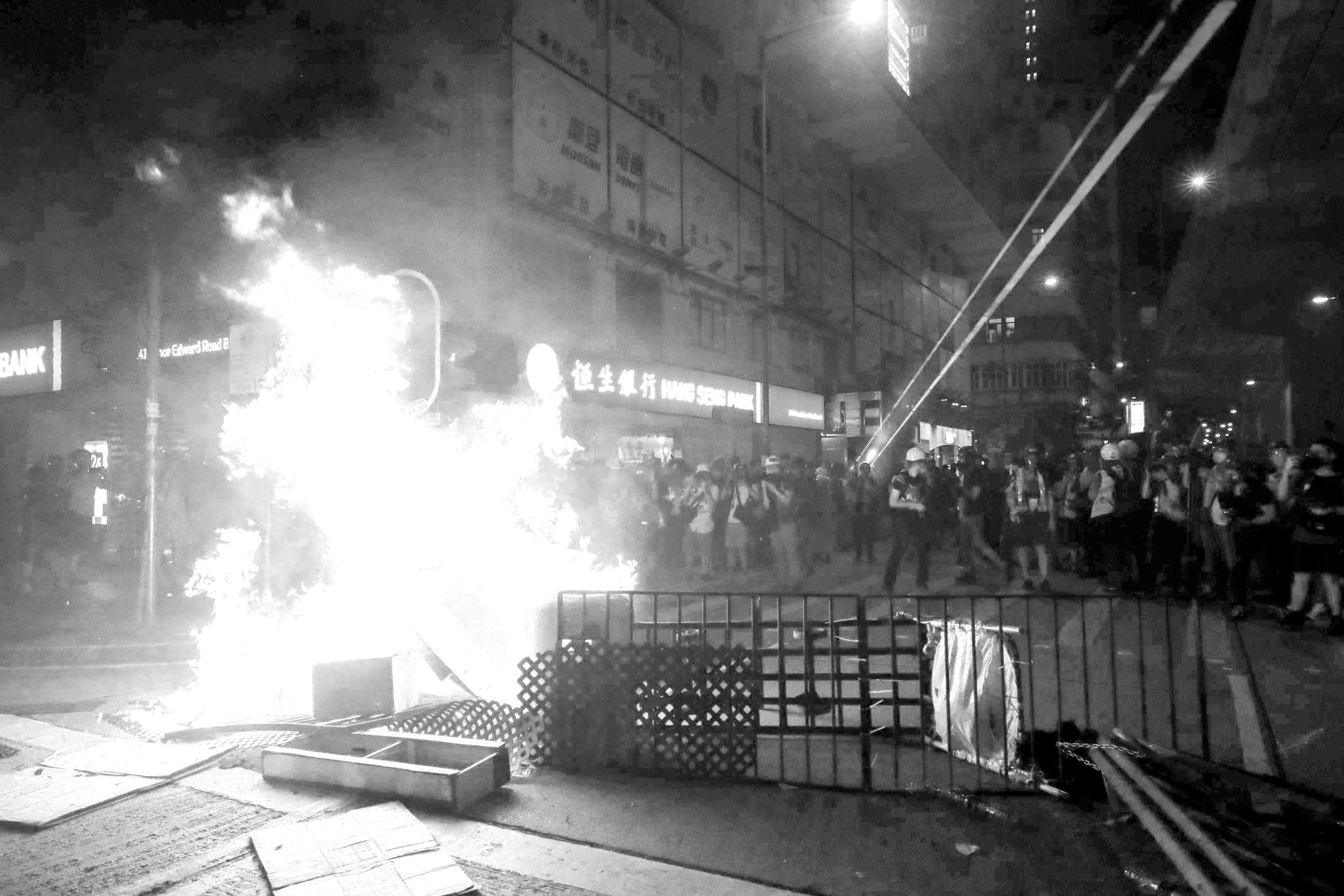
The months-long movement has also been composed of alternate peaceful protests and more radical actions, allowing citizens to play the roles they are most comfortable with. More Hong Kong protesters have shown more tolerance towards the use of violence, with the slogan “It was you who taught me peaceful marches are useless” spray-painted in the city’s legislature after it was stormed on July 1.
Gear in 2014
The Occupy movement was also called the “umbrella movement” because protesters used colourful umbrellas to fend off pepper spray fired by police.
Those on the front lines also protected themselves with goggles and surgical masks, and occasionally covering their arms in cling wrap, to defend against tear gas and pepper spray.
Gear in 2019
While most Occupy protesters did not wear masks, the picture has completely changed in 2019 with most black-clad demonstrators, even those taking part in peaceful marches, concealing their faces.
They have also upgraded their gear amid escalating violence in the months-long movement.
Protesters are now equipped with helmets, 3M goggles and sophisticated gas masks to protect themselves against tear gas and different kinds of rounds fired by police.
On the front lines, they hold umbrellas and makeshift shields cobbled together from traffic signs, wooden panels, ironing boards and body padding. Some use water bottles and racquets to extinguish and hit back tear gas canisters, while radicals resort to petrol bombs.
Weapons used by police
On September 28, 2014, officers fired 87 canisters of tear gas to disperse protesters gathered in Admiralty, Wan Chai and Central - marking the first time the crowd-control weapon was used against Hongkongers since the city’s return to Chinese rule in 1997. Throughout the 79-day sit-in, police used mostly batons and pepper spray in clearance actions.
As of September 20 this year, at least 3,100 canisters of tear gas, 590 rubber bullets, 290 sponge grenades and 80 beanbag rounds have been fired. Officers have also used batons frequently to disperse the crowd, which at times had resulted in bloody arrests and questioned by human rights watchdogs.
Demands in 2014
In 2014, Occupy protesters only had one clear demand: the implementation of universal suffrage. They were out on the streets to protest against the stringent electoral reform framework handed down by the central government on August 31, 2014 which effectively barred non-endorsed candidates from running for the city’s top job.
THEIR KEY SLOGANS
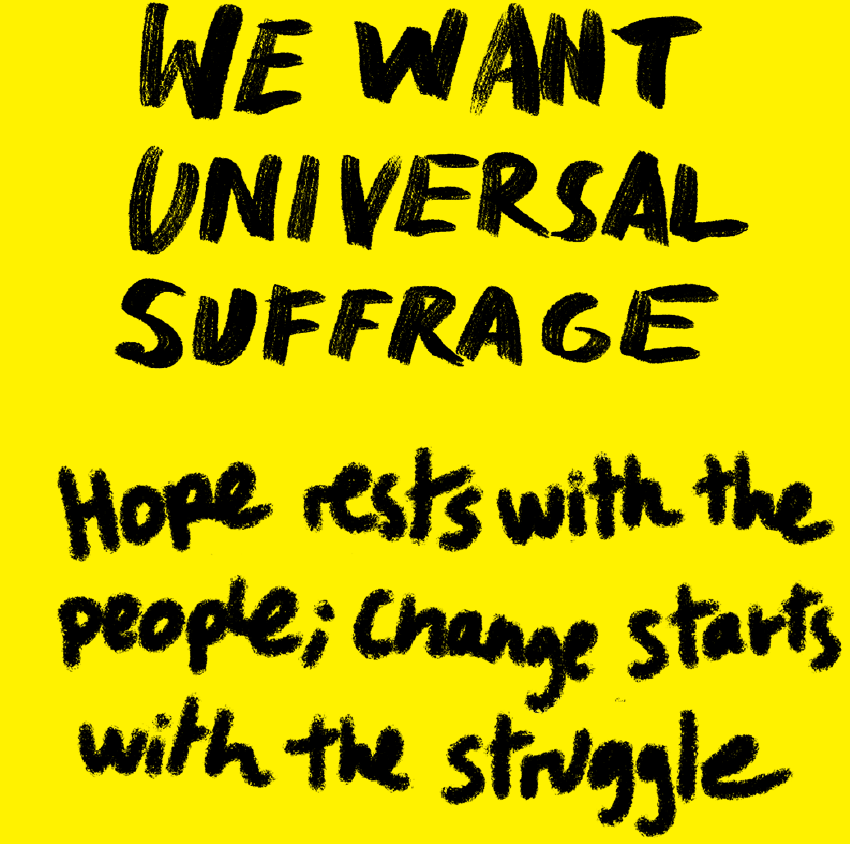
Demands in 2019
In 2019, when an estimated 1 million people took to the streets on June 9, they only had one demand: the withdrawal of the hated extradition bill, which would have allowed the transfer of fugitives to jurisdictions with which Hong Kong does not have such an agreement, including mainland China. But as confrontations with police escalated and the movement morphing into a wide anti-government campaign, protesters came up with five demands.
Apart from the complete withdrawal of the bill - which the government finally fulfilled on September 4 - protesters are also calling for an independent probe into police action; amnesty for arrested protesters; a halt to categorising the protests as riots and universal suffrage.
SLOGANS
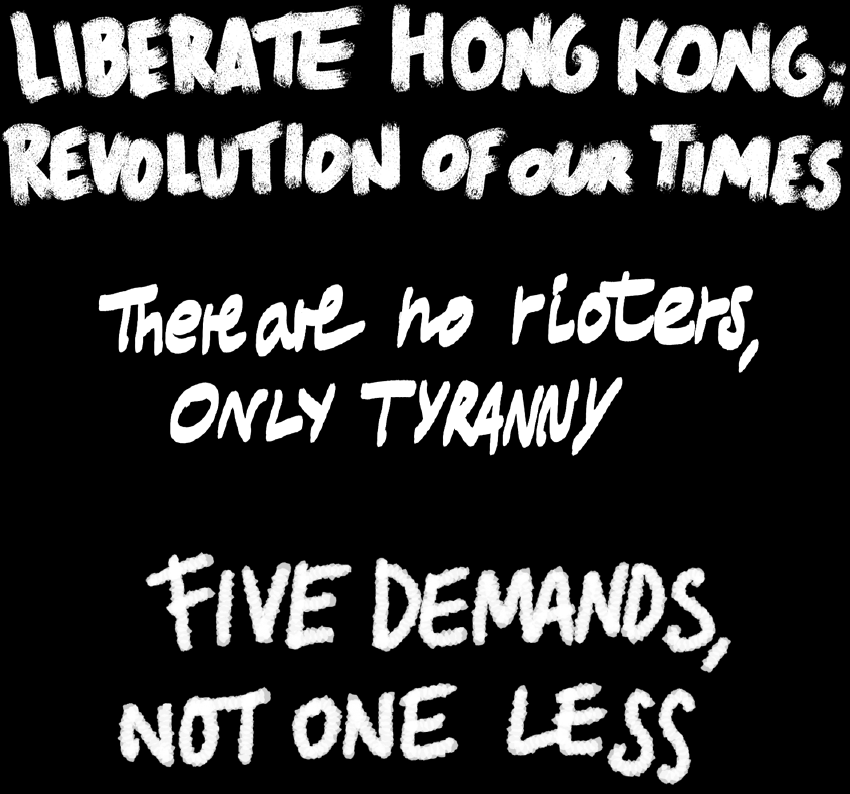
Protest songs in 2014
Boundless Oceans, Vast Skies, a classic by rock band Beyond:
Raise the Umbrellas, penned by activist Lo Hiu-pan and composer Lin Xi, and performed by singers Denise Ho Wan-see, Anthony Wong Yiu-ming and Deanie Ip Tak-han:
Protest song in 2019
Glory to Hong Kong, composed by LIHKG user “Thomas”, has become the rallying call of protesters. An online video of an orchestra of 150 masked musicians and singers dressed in protest gear while performing the song has drawn nearly 1.8 million views in two weeks. The song has also been sung by protesters staging demonstrations in malls citywide:
Lennon Wall
Five years ago, colourful Post-it notes in support of the Occupy movement were put up next to a staircase at the main Admiralty protest zone. This was later known as the “Lennon Wall”, becoming a landmark of the 2014 campaign.
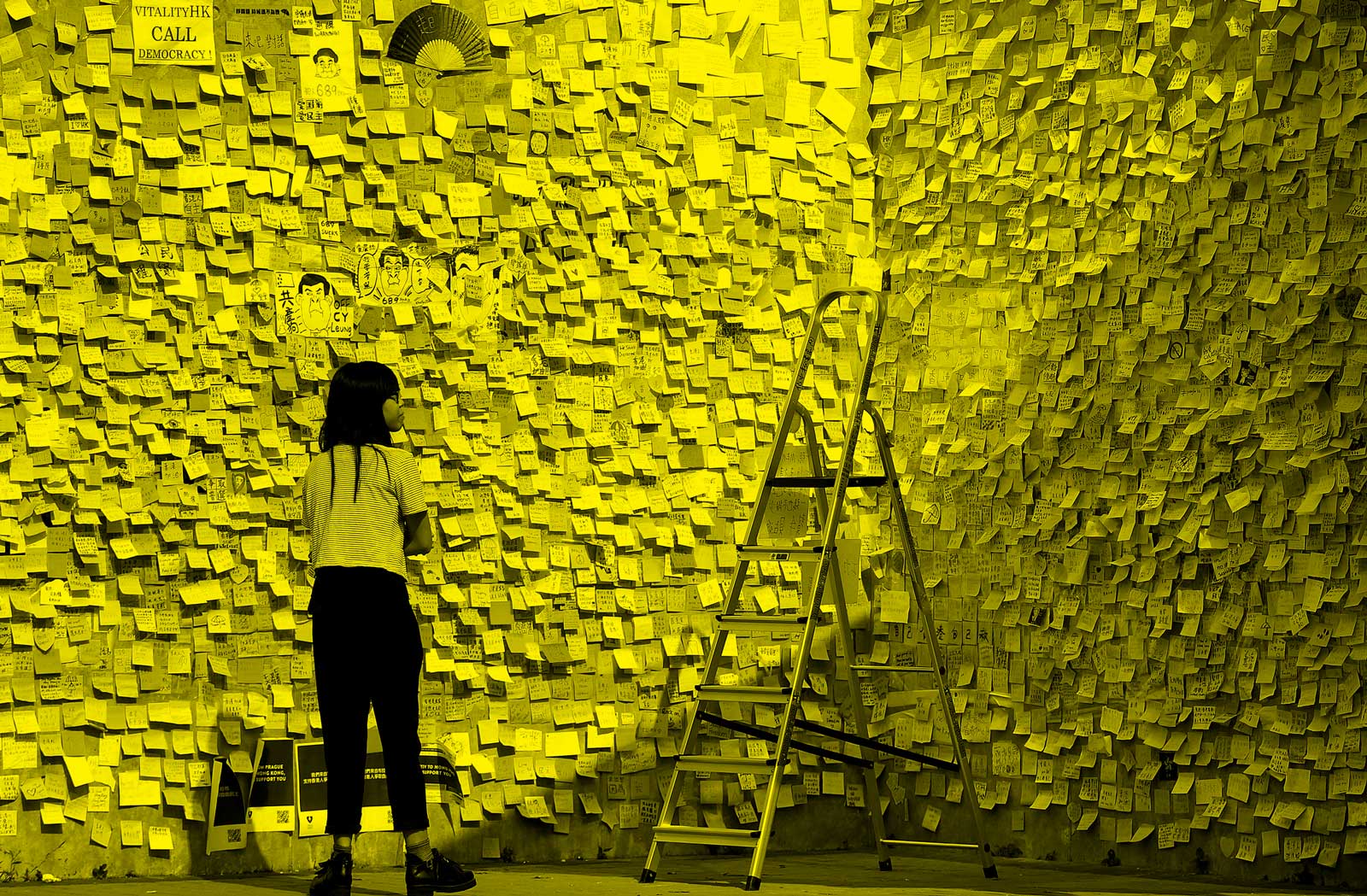
In 2019, Lennon Walls have sprung up in almost every district across the city, even on the outlying islands. In Tai Po, a whole pedestrian subway has been converted into a large-scale “Lennon Tunnel”.
But the walls have also become flashpoints for clashes between people of different political views. A 50-year-old man allegedly stabbed three people, including a journalist, at a Lennon Wall in a tunnel in Tseung Kwan O in August. He was later arrested.
In September, clashes broke out between protesters and pro-Beijing supporters after the latter cleared a Lennon Wall near Amoy Plaza shopping centre in Kowloon Bay.

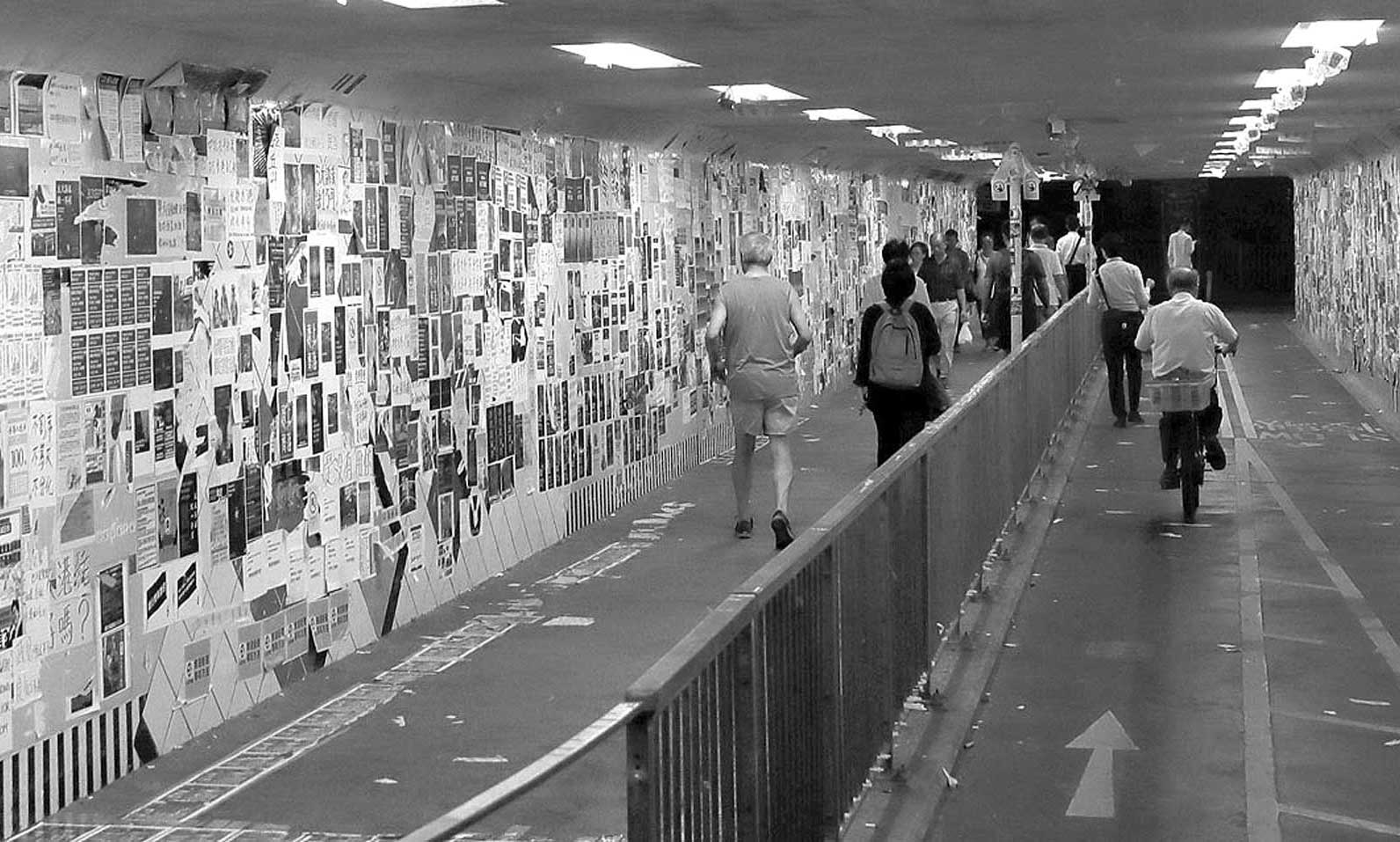
Arrests
The Occupy movement resulted in a total of 1,003 people arrested, of which 225 had undergone - or were undergoing - judicial procedures as of last month. Up to 169 of them faced legal consequences; 127 people were convicted while 42 of them received bind-over orders.
They were convicted on charges including common assault, unlawful assembly, disorder in a public space, possession of an offensive weapon, assault occasioning actual bodily harm and criminal damage.
During the current movement, police have arrested 1,586 people as of September 25, and charged 221 of them. At least 83 have been charged with rioting, while others were charged with offences including possession of an offensive weapon, unlawful assembly, arson, conspiracy to desecrate the national flag and conspiracy to damage property.
Gang attacks
In 2014, suspected triad members punched and kicked at least 12 pro-democracy protesters in the Mong Kok occupation zone as they tore down tents. Similar scuffles also broke out in Causeway Bay where a group of masked men threw punches and tore down banners and barricades. Lai Tung-kwok, the then secretary for security, denied police were colluding with the triads to clear protesters.
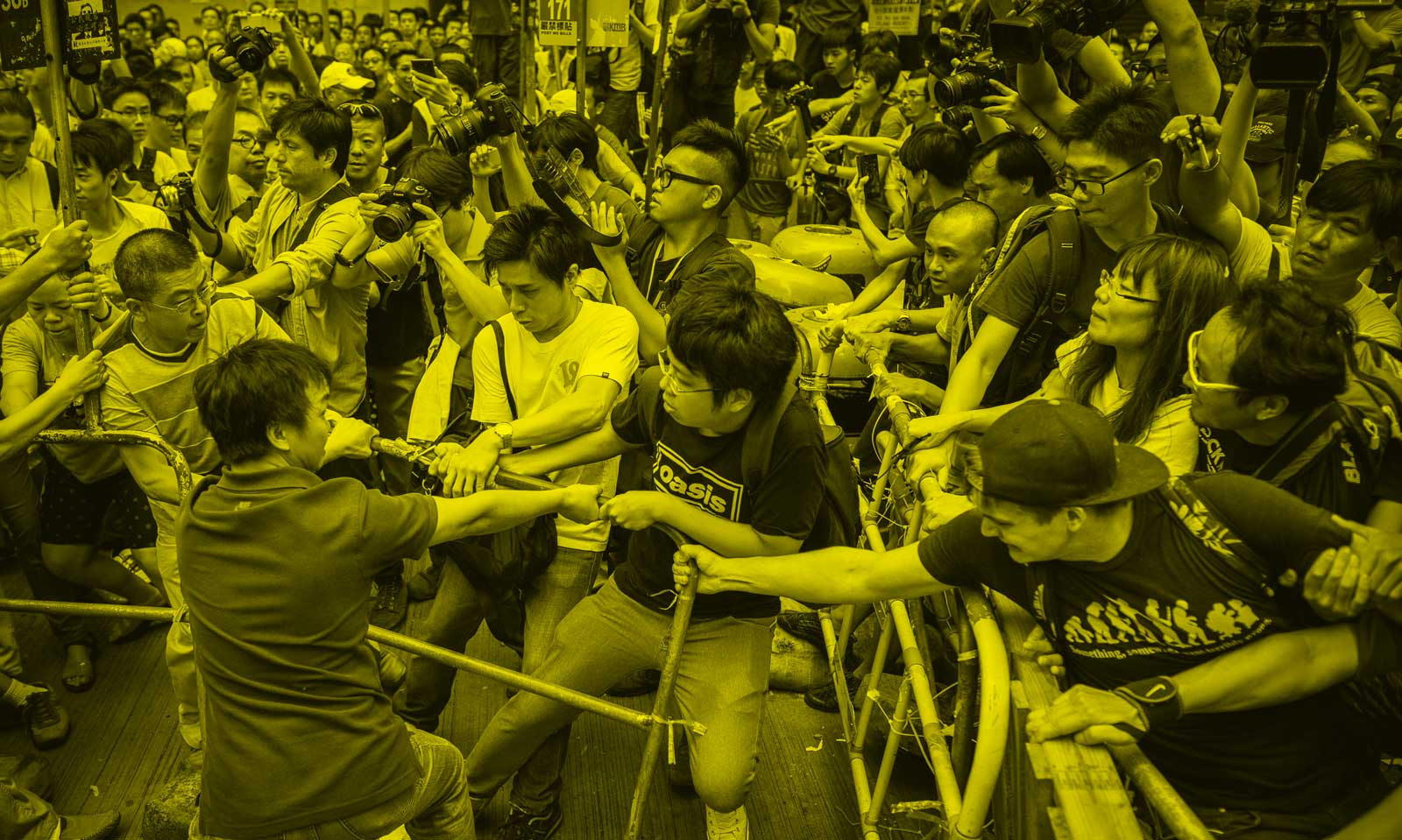
On the evening of July 21 this year, a group of white-clad men with wooden sticks and metal rods stormed Yuen Long MTR station and a train, attacking commuters and protesters returning from clashes in the city centre. The episode left at least 45 injured. Again, police were accused of deliberately turning a blind eye to the incident, as officers only showed up at the scene nearly 40 minutes after the first report was made. The force denied any triad collusion, claiming weeks of protests had put a strain on manpower.
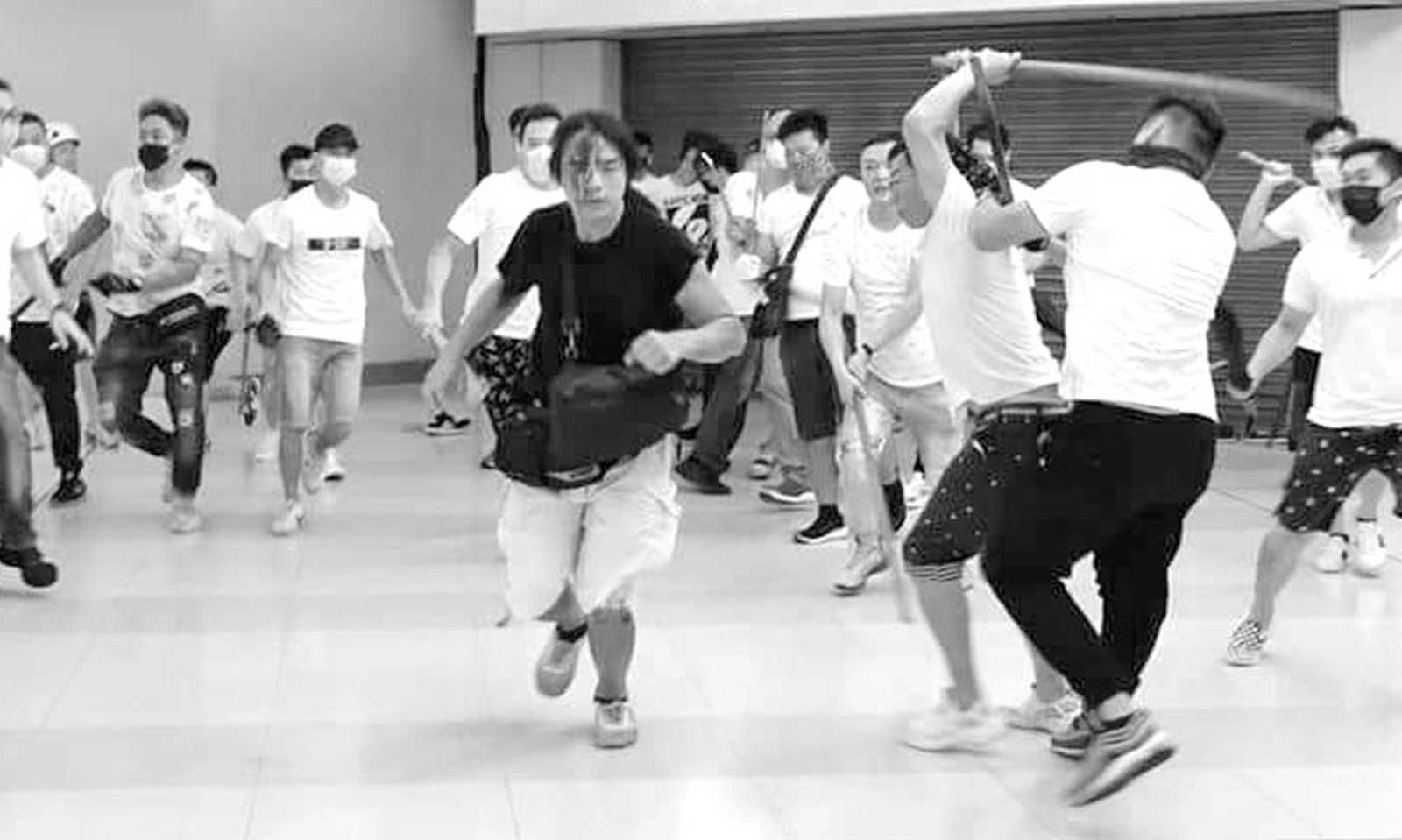
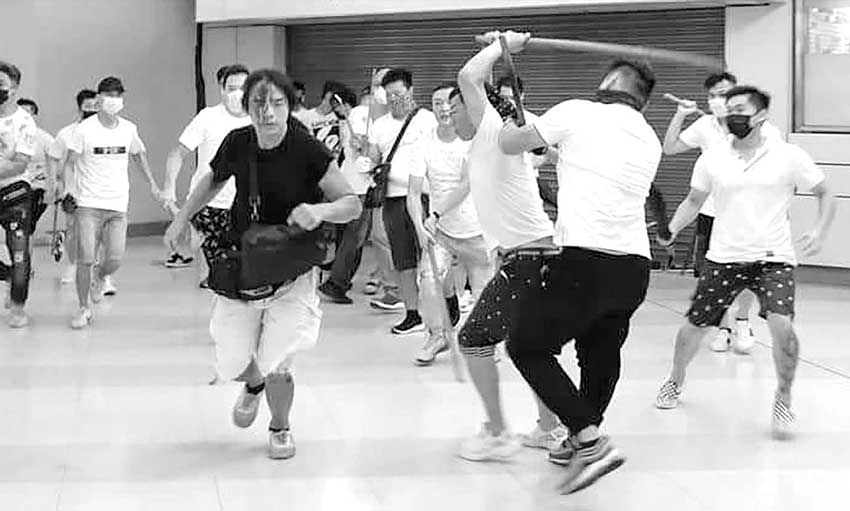
Retail figures
The future
2014: Ahead of police’s action to clear their occupation site in Admiralty, protesters unfurled massive banners declaring ‘We will be back’ and ‘It’s just beginning’ as they vowed to make a comeback some day.

2019: Many protesters see the movement as a now-or-never chance to fight for genuine democracy. Some say they are prepared to risk everything for their cause and believe quitting midway is not an option, especially after many comrades have either been arrested or injured in the past months. They are not going down without a fight, they say, as they declare in their posters: ‘If we burn, you burn with us’.
